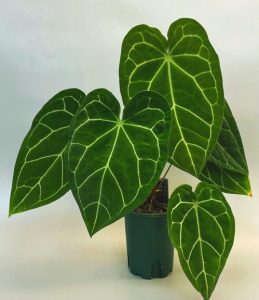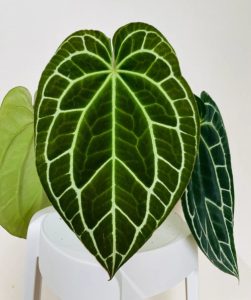- English
- Chinese
- French
- German
- Portuguese
- Spanish
- Russian
- Japanese
- Korean
- Arabic
- Irish
- Greek
- Turkish
- Italian
- Danish
- Romanian
- Indonesian
- Czech
- Afrikaans
- Swedish
- Polish
- Basque
- Catalan
- Esperanto
- Hindi
- Lao
- Albanian
- Amharic
- Armenian
- Azerbaijani
- Belarusian
- Bengali
- Bosnian
- Bulgarian
- Cebuano
- Chichewa
- Corsican
- Croatian
- Dutch
- Estonian
- Filipino
- Finnish
- Frisian
- Galician
- Georgian
- Gujarati
- Haitian
- Hausa
- Hawaiian
- Hebrew
- Hmong
- Hungarian
- Icelandic
- Igbo
- Javanese
- Kannada
- Kazakh
- Khmer
- Kurdish
- Kyrgyz
- Latin
- Latvian
- Lithuanian
- Luxembou..
- Macedonian
- Malagasy
- Malay
- Malayalam
- Maltese
- Marathi
- Mongolian
- Burmese
- Nepali
- Norwegian
- Pashto
- Persian
- Punjabi
- Serbian
- Sesotho
- Sinhala
- Slovak
- Slovenian
- Somali
- Samoan
- Scots Gaelic
- Shona
- Sindhi
- Sundanese
- Swahili
- Tajik
- Tamil
- Telugu
- Thai
- Ukrainian
- Urdu
- Uzbek
- Vietnamese
- Welsh
- Xhosa
- Yiddish
- Yoruba
- Zulu
- Kinyarwanda
- Tatar
- Oriya
- Turkmen
- Uyghur

Ko nga puku puaa kanapa me nga rau matomato ka hanga anthurium (Anthurium Clarirvium) he tipu o roto. Ko tenei tipu kaore noa i roto i nga taiao engari ko te aroha me te atawhai. Mena ka ako koe i nga tikanga tiaki tika, he tino tika te tipu o te tipu maeneene.

Anururium
Maama: Hoatu to Anthurium te rama tika
Among the elements most crucial for Anthurium Clarinervium’s development is light. Bright, indirect light is preferred by anthuriums, which enables them to keep their leaves in good color and their capacity to keep flowering. Anthuriums are ideal for interior settings near east or west windows, which may provide the plant with enough light either from morning or evening sun.
I tetahi atu taha, he nui rawa te ra, ka taea e nga puku o te pua puawai te pua puawai me nga puku puawai. Ko te kupu, kia mau tonu nga anthurium mai i te marama ki te tonga ki te tonga e pa ana ki te marama ki te taha o te marama. Ko te whakamarama maamaa e taea ai te anthiums kia mau tonu te tipu me te pua i roto i nga tikanga iti-iti.
This might indicate inadequate light if you find that the leaves of anthuriums have become dull or that the flower buds no longer show presence. To aid in the recovery of the anthurium, consider shifting it to a better light source or extending the length and strength of the light during this time. Keeping the anthurium healthy mostly depends on routinely changing the plant’s location to guarantee that it gets suitable light.
Te pāmahana me te haumākū: Ko te hauora o te anthurium Clarirvium e whakawhirinaki ana ki te taiao
E rua nga taurangi taiao e pa ana ki te whakaawe i te whanaketanga anTurium he pāmahana me te makuku. Maori ki nga ngahere ngahere, e tono ana nga anthurium mahana, he pai te tipu. I waenga i te 18 ki te 27 ° C te waahanga pāmahana tino pai; Ka awhina tenei i nga anthiums kia mau tonu, kia mau tonu.
Ko te pupuri i te pāmahana o-roto kaore i te iti iho i te 15 ° C me tino nui i te takurua he iti rawa te whanaketanga o te tipu o te tipu. I tua atu i te aukati i nga anthium i te taha o nga matapihi me nga tatau e tino pai ana, kua mate ranei i te whakaekenga o te hau makariri ka kino te kino o te hau. Nukuhia te anthurium ki te ruuma mahana, te hau-a-hau ranei te whakamahi i te haumuru ki te whakaara i te makuku i te hau, ka aukati i te hau hotoke maroke mai i te tipu o te raumati.
Anthurium Clarinervium development depends also on humidity, a crucial element. Anthurium leaves may seem curling or dry-tipped in dry surroundings. Often misting the anthurium’s leaves with water will help to raise the humidity of the surrounding environment. Furthermore, arranging the anthurium next to a humidifier or a water basin surrounding the plant will assist to raise the humidity in the air and provide a growth state more in line with its natural habitat.
Te whakarite kia noho tonu te tipu o te anthurium e 60% te awhina i nga tangata e noho ana i nga Clrier Clrimes kia pai ai te tipu. Ko te whakaū i te pāmahana tika me te haumākū ka taea te awhina i te anthurium kia puta ai te tino ataahua i roto i to whare, i to umanga ranei.
Ako i nga tikanga whakainu mo nga anthiums
Ko nga anthurium he taangata wai-wai, na reira he mea nui te whakainu tika kia tutuki ai to raatau whanaketanga pai. Ahakoa kaore i te tino ngoikore, he maha tonu nga mea ka makuku te oneone. Ko te whakamakuku he anthurium he pai te tatari kia rua ki te rua ki te toru henimita o te mata o te oneone kua maroke. Kia mahara ka taea e te wai te tino kitea ki te whenua me te waatea wai ki roto i nga rua o te wai i nga wa katoa e wai ana koe.
Anthuriums’ health depends on drainage holes as they help to avoid root rot by preventing water from gathering at the pot’s bottom. Should your pot lack drainage holes, it is advised to choose another pot with drainage capability or spread a layer of stones at the bottom to boost drainage.
Anthuriums’ water requirement could rise in the hot summer, hence the frequency of watering should also rise in line. On the other hand, the temperature is lower in winter, the growth rate of plants slows down, and the frequency of watering may be suitably lowered; still, the soil should be somewhat wet to help the plant to retain vitality in the dry winter environment.
Furthermore, room temperature water or rainfall is a suitable alternative for watering anthuriums as cold water could aggravate the plant’s regular development by stimulating its root system. Should you discover that the leaves of anthuriums start to yellow or fall off, this might indicate either too little or too much water. Changing the frequency and watering technique will assist the plant get back in health at this point.
Kōwhiria te whāriki oneone e tika ana
Ko te anthurium ka tupu i te whenua, na reira he whenua oneone tenei; No reira, ko te hauora o te tipu ka whakawhirinaki ki te kowhiringa o te papa oneone. He pai te anthurium ki te oneone-nui, ka taea te whakarato i nga matūkai nui me te pupuri i nga pakiaka mai i te heke ki te wai.
Ka taea pea e koe te whakatau ki te whakato i te anthurium i roto i te oneone whakaranu, penei i te oneone o te riina me te perlite i te rahi. Ko tenei hanganga maamaa me te pai o te whenua ka awhina i te pai o te pakiaka. I tua atu, ka taea pea e nga maniua rauropi te anThurium i nga matūkai e hiahiatia ana hei tautoko i te pua me te whanaketanga. Ko te whakatipuranga o te tipu ka awhina ki te pupuri i te anthurium i roto i te tipu kaha, ina koa i te puna me te raumati i te teitei o te tipu o te tipu.
Changing the soil for anthurium every two years is advised when repotting to help to prevent nitrogen loss and soil aging. Should you discover that the soil’s drainage performance has dropped or that the plant’s development rate has slowed down, this might be indicators of a repot. To give the anthurium’s roots more room to flourish, use a somewhat bigger pot for repotting.

Anthurium Clarirvium
Tukua te anthurium shine
Ma ona puawai pua puawai me nga rau matomato hohonu, ka whakawhiwhia e te anthurium tetahi momo oranga o roto me te tae. Te Anururium ka tino tiakina, ka tupu hoki i roto i to whare, i to umanga ranei me te maama tika, te pāmahana, te makuku, me te whakarite i te wahanga. Ko te ako i enei tikanga atawhai ka taea e koe te mohio ki te pupuri i te anthurium ka kawe mai i tenei tipu ataahua ki te tino ataahua i roto i to taiao noho. Ahakoa i puritia i roto i te ruma mahana, i runga i te matapihi pai ranei, ka ora te anthurium i to koiora me te iti o te ataahua taiao.
Previous News
Ataahua me te tiaki i te kuini o Aglaonema māwheroNext News
Te Toi Whakaari mo te Dracaena


